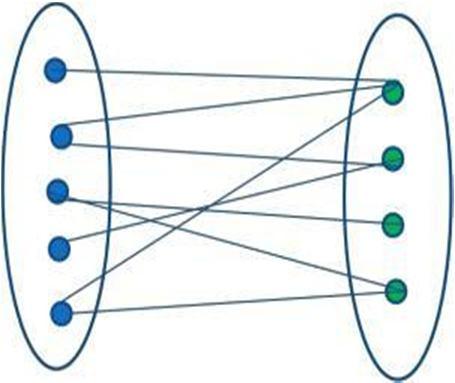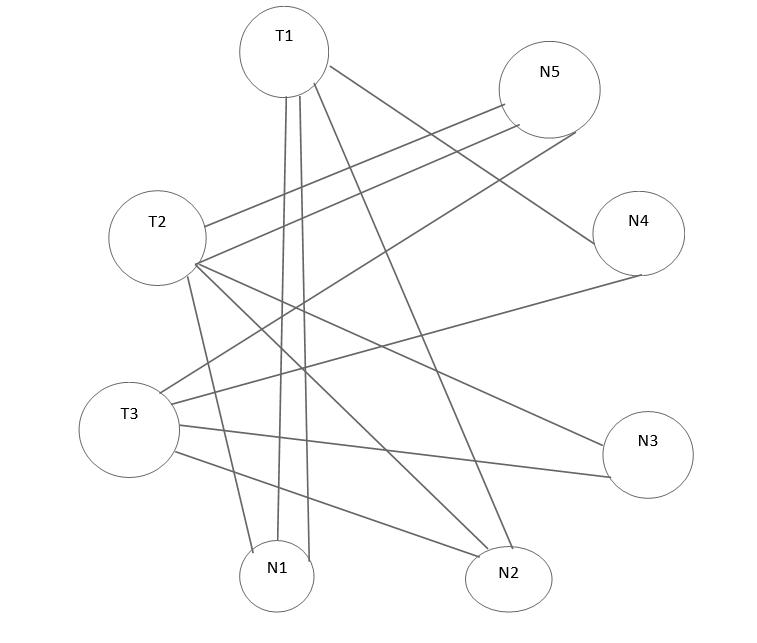
ISSN: 2321-9653; IC Value: 45.98; SJ Impact Factor: 7.538

Volume 10 Issue XII Dec 2022- Available at www.ijraset.com


ISSN: 2321-9653; IC Value: 45.98; SJ Impact Factor: 7.538

Volume 10 Issue XII Dec 2022- Available at www.ijraset.com
Buvaneswari N1 , Rekha S2
1Msc Mathematics, 2Assistant Professor, Department of Mathematics, Dr. SNS Rajalakshmi college of arts and science, Coimbatore, Tamilnadu, India

Abstract: In any educational institution, the two most common academic scheduling problems are course timetabling and exam timetabling. A schedule is desirablewhich combines resources like teachers, subjects, students, classrooms in a way to avoid conflicts satisfying various essential and preferential constraints. The timetable scheduling problem is known to be NP Complete but the corresponding optimization problem is NP Hard. This problem is solved using bipartite graph. Hence a heuristic approach ispreferred to find a nearest optimal solution within reasonable running time.
Keywords: course time table scheduling
In the year 1736,graph theory originated from the Konigsberg bridge problem pointed out by mathematician Euler which later led to the concept of Eulerian graph[4]. In the same decade, Gustav Kirchh off established the concept of a tree, a connected graph without cycles which was used in the calculation of currents in electrical networks or circuit and later to enumerate chemical molecules.In1840.
While constructing schedule of courses at a college or university, it is obvious that courses taught by the same professor and courses that require same classroom must be scheduled at different time slots.Further more,a particular student or group of students may be required by a curriculum to take two different but related courses(e.g., physics and Mathematics) concurrently during a semester. In such cases too,courses need to be scheduled in away to avoid conflicts.

A graph G is an ordered triplet (V(G), E(G), ф) consisting of a non-empty set V of vertices or nodes, E is the set of edges and ф is the mapping from the set of edges E and the set of vertices V. In a bipartite graph (or bigraph) (Fig. 1) the set of vertices V can be partitioned into two disjoint sets V1 and V2 such that every edge of the graph connects a vertex in V1 to one inV2, i.e.V1 andV2 are independent sets.
V1 V2
Fig.1Bipartitegraph

The general idea of a scheduling problem is defined by allocation of related resources among a number of time-slots satisfying various types of essential and preferential constraints aiming at creating optimized conflict-free schedule. Some of the typical scheduling problems include-
1) CourseTimetableScheduling-coursessharingcommonresourcestobescheduledin conflict-freetime-slots.
2) ExamTimetableScheduling–examssharingcommonresourcestobescheduledin conflict-freetime-slots.
3) Aircraft Scheduling-aircrafts need to be assigned to flights.
ISSN: 2321-9653; IC Value: 45.98; SJ Impact Factor: 7.538

Volume 10 Issue XII Dec 2022- Available at www.ijraset.com
Effective timetable is vital to the performance of any educational institute. It impacts their ability to meet changing and evolving subject demands and their combinations in a cost-effective manner satisfying various constraints. In this paper, we have focused our work into CourseTimetable Scheduling.
Course Timetabling is the scheduling of a set of related courses in a minimal number of time-slots such that no resource is required simultaneously by more than one event.In a typical educational institute resources,which may be required by courses simultaneously can be students, classrooms and teachers.
For a given ‘T’ number of teachers, ‘N’ number of subjects and available ‘P’ number of periods, a timetable should be prepared. The number of classes for each subject needed by a particular teacher is given in Table2.This problem is mentioned earlier in some papers[25][26]but only a partial solution was provided in both.
Number of teachers -3
Number of subjects-5

List of subjects are following
N1- Calculus
N2- Classical Mechanics N3- Phython Programming N4- Trigonometry N5- MS office
Periods P N1 N2 N3 N4 N5
a) At any one period, each subject can be taught by maximum one teacher. b) At any one period, each teacher can teach at most one subject.
a) Teacher taking two classes of same subject to be scheduled in consecutive periods. b) No more than two consecutive theory classes can be assigned to same teacher for teaching same subject.
This problem is solved using bipartite graph which acts as the conflicts graph. The set of teachers and subjects are the two disjoint independent sets . edges are drawn connecting a vertex from teacher set to a vertex in subject set, indicating that the subject requirement matrix given table .
The solution to the problem is obtained by proper edge coloring of the bipartite graph as shown the following figure. The chromatic number acts as the minimum number of periods.

ISSN: 2321-9653; IC Value: 45.98; SJ Impact Factor: 7.538 Volume 10 Issue XII Dec 2022- Available at www.ijraset.com



Thus the final complete schedule is obtained Final Teacher -Subject Allotment Table
Period 1 Period 2 Period 3 T1N2 T1N1 T1T4 T3N3 T2N1 T2N5 T3N2 T1N5
This paper focus our works into course Time Scheduling using bipartite graph .which helps the educational institute to construct effective time table.
[1] Welsh, D.J.A., and Powell, M.B., 1967, “An Upper Bound for the ChromaticNumberofaGraphandit'sApplicationtoTimetablingProblems,”TheComputerJournal. 10(1), pp. 85-86.
[2] Garey, R. D.,and Johnson, S., 1979, “Computers and intractability:A GuidetotheTheoryof NP-Completeness,”Freeman.
[3] Burke, E. K., Elliman, D. G., and Weare, R., 1993, “A university timetablingsystembasedongraphcoloringandconstraintmanipulation,”JournalofResearchon Computingin Education, 27(1), pp. 1-18.
[4] Wood,D.C.,1968,“ASystemforComputingUniversityExaminationTimetables,”TheComputerJournal, 11, pp.41-47.
[5] Bondy, S., 2002, “Final Examination Scheduling,” Communications of theACM, 22(7), pp. 494-498.

